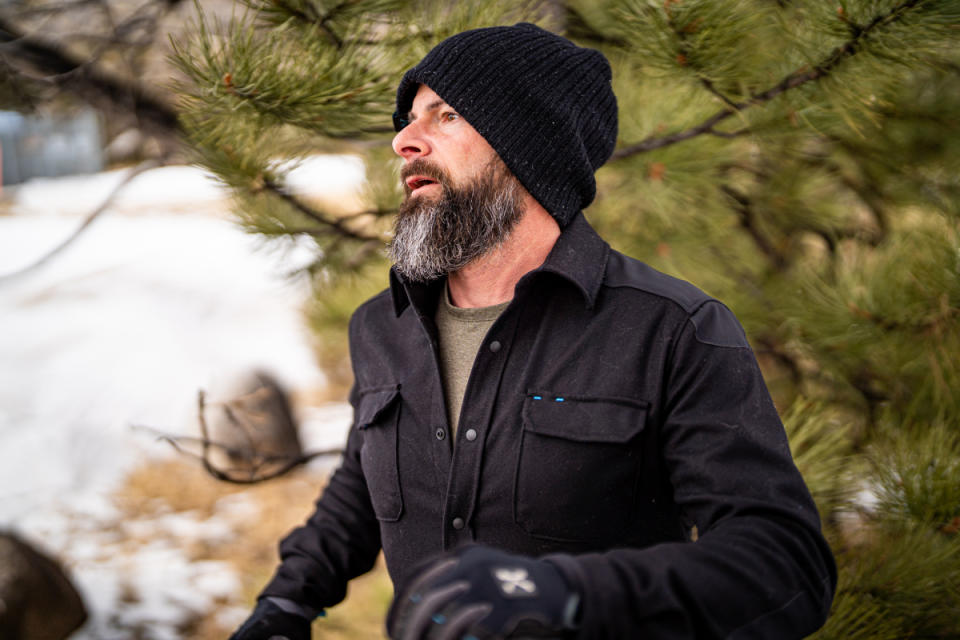Last Ride for Cash-Poor, Made-in-America Kitsbow?

Kitsbow, a small, North Carolina-based benefit corporation that bet on American manufacturing, is closing shop.
Just 15 months after transitioning to employee ownership, the cycling apparel brand announced in March it would soon cease production at its Old Fort, N.C., factory. In a letter to Kitsbow’s customers, CEO David Billstrom attributed the company’s current situation in part to a lack of operating capital and an unfriendly investment environment.
More from Sourcing Journal
“Professional investors, institutional investors looking at apparel saw the 2021 boom and the 2022 crash in apparel as something not worth touching,” Billstrom told Sourcing Journal. “And then, in general, the investment world had clamped down on investments throughout 2022, and they’re currently almost completely halted—I’m talking about high-risk companies that aren’t yet profitable. And Kitsbow wasn’t profitable.”
With traditional investors off the table, Kitsbow launched a crowdfunding campaign in the fall with the hopes of raising $1 million, money that would have gone to advertising and onboarding more sewers, Billstrom said. The company raised 40 percent of its goal in just 10 days, then another 10 percent over the next four months. As of Wednesday, Kitsbow had raised just over $599,600 from 347 investors, according to the cycling brand’s WeFunder.
The crowdfunding page doubled as a means for the company to communicate its successes, shortcomings and strategies to its supporters. The week before it revealed plans to shut down, Kitsbow announced that it was shifting away from made-to-order and that it would cease offering seasonal garments, such as sweaters, year-round—a change it said would “keep costs under control.”
A month earlier, it warned that February and March, the brand’s slowest times of the year, would see Kitsbow spend more than it could make in sales. It also previewed retail partnerships in Seattle, Minneapolis and Raleigh, N.C., and new and improved spring styles. “This is the first time in Kitsbow’s history that we have been truly poised with a line of Spring apparel… in Spring,” the brand wrote.
A little more than a month later and still $400,000 short of its funding goal, Kitsbow cut these initiatives short.
“We needed all $1 million,” Billstrom said. “That’s why it ended.”
Founded in 2012, Kitsbow spent its initial years outsourcing its manufacturing to countries like China and Vietnam. When Billstrom took over as CEO from the brand’s founder, Zander Nosler, six years later, he saw an opportunity to change that.
“[Nosler] knows a great deal about lean manufacturing because he’s not an apparel guy, he’s a manufacturing guy,” Billstrom said. “He had a prototype project going in California, and it proved the viability—or at least I saw that it proved the viability—of making in America. So, I proposed to him and to investors that we move the company [from California] to North Carolina and make the clothes in America.”

Kitsbow followed through on the plan the following year, setting up shop in Old Fort, N.C. Only a couple years passed, however, before Nosler and Kitsbow’s investors decided they wanted to sell the company. With Billstrom’s help, the brand’s employees—alongside “some impact investors,” the CEO said—negotiated to buy Kitsbow and run the company for the benefit of the community. In January 2022, it changed ownership and rebooted as Kitsbow Apparel, Benefit Corporation.
The new company faced several immediate challenges, Billstrom said. First, it faced the basic difficulties of any direct-to-consumer, online-only brand. On top of that, Kitsbow faced the additional hurdles associated with manufacturing all of its own products.
“So, here’s innocent Kitsbow—some might say naïve—trying to run their own factory, exclusively, and run their own online brand,” Billstrom said. “Almost nobody does that. And that’s two ‘hards,’ where most companies choose one of those hards—either they’re a nameless company without a brand because they’re running a factory for other brands, or they’re a brand and they’re buying from contract factories. But of course, Kitsbow being Kitsbow, we had to add a third hard, which is we were there for the benefit of the community.”
In the farewell letter he published last month, Billstrom shared that Kitsbow had injected an annual payroll of approximately $2 million into Old Fort and surrounding McDowell County. At its height, it employed about 60 people—a number that had fallen to 41 by March. Despite taking on the responsibility of teaching its makers how to sew, Billstrom said Kitsbow ultimately ended up paying “close” to the same labor costs its contractors in Vietnam charged.
“Those are three hard things and they all require cash and we didn’t have enough cash,” Billstrom said. “That’s why the company went out of business.”
Kitsbow’s early-pandemic decision to embrace PPE production—and a late-in-the-game pivot back to apparel—didn’t help matters, either, though.
With apparel sales down in 2020, the mask market proved particularly beneficial for Kitsbow. Even as apparel revenue declined year over year, overall sales grew 77 percent, according to data on the brand’s WeFunder page. In 2020, Billstrom said, it recorded $1 million in apparel sales and $2 million from PPE. The following year, it made $2 million from apparel and $1 million from PPE. Last year, however, PPE sales evaporated, more than canceling out apparel’s modest bump up to $2.1 million in revenue.

“We took our eye off the ball of making clothes for a year and a half,” Billstrom said.
Though he still sees Kitsbow’s decision to manufacture face masks as “the right thing to do for the community,” the CEO conceded it delayed the brand’s return to apparel, especially in the fourth quarter of 2021, when other outdoor retailers posted some of their highest sales ever. Kitsbow, by contrast, had reintroduced no more than 10 styles at the time.
“We missed ’21,” Billstrom said. “We spent ’22 coming back into apparel during a time where there was excess apparel inventory worldwide and especially in the United States. That was tough. Lots of cash flowed in and flowed out and it took us away from apparel.”
With the company fielding potential purchase offers, Billstrom said that it’s difficult to say what’s next for the brand. In an update posted to Kitsbow’s WeFunder page, the CEO told investors that the company was “actively in negotiations with several different parties about a potential acquisition.”
For factory employees, however, work ended earlier this month on April 8. When Billstrom announced Kitsbow’s impending end last month, he invited fans of the brand to hire the laid-off workers. As of Friday, “probably 50” companies had inquired and offered jobs, Billstrom said.
“It’s difficult to talk about the future objectively, but right now I am dressed head-to-toe in clothes that my neighbors made,” he added. “I really can’t imagine going back. I know the conditions in which clothes are made overseas, and it’s one of the reasons why Kitsbow stopped buying clothes overseas in 2019—from excellent partners who did beautiful work. But fundamentally, it’s an exploitive workforce and that’s not okay with me.”

